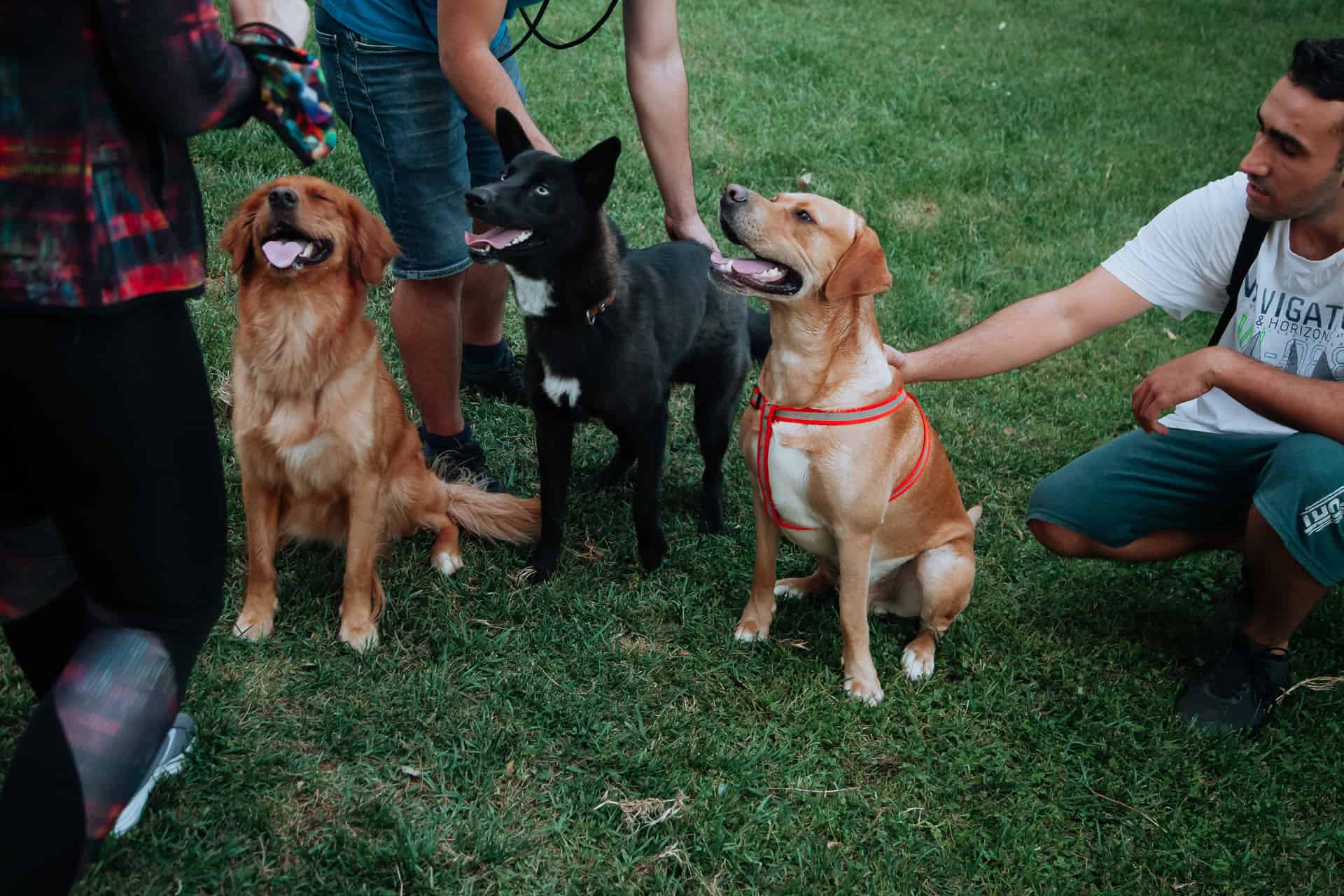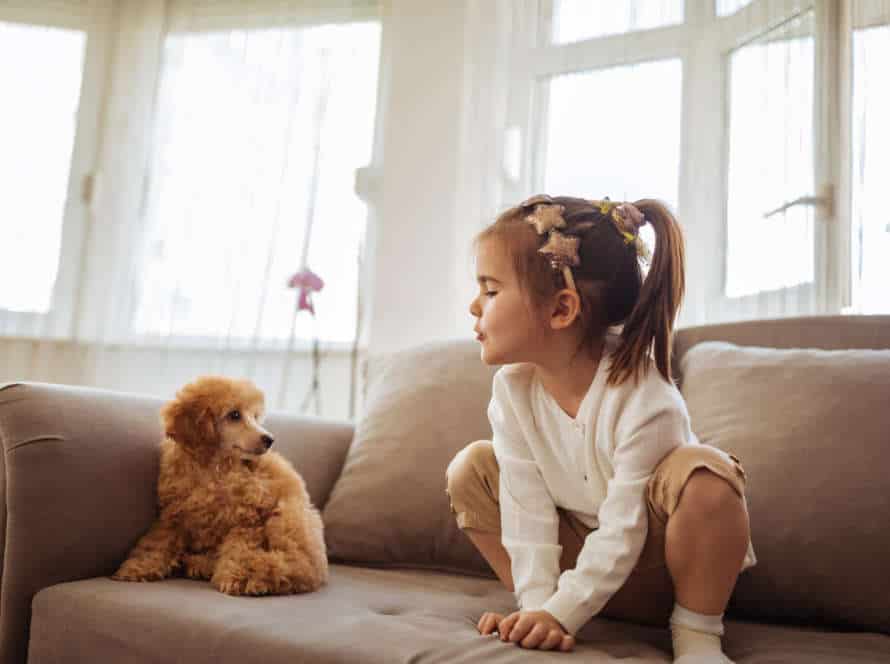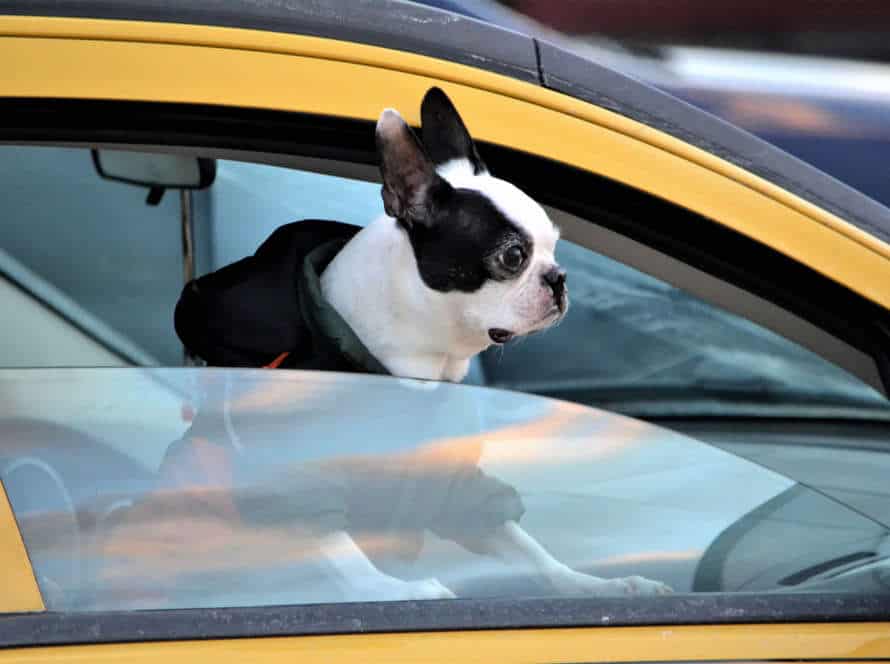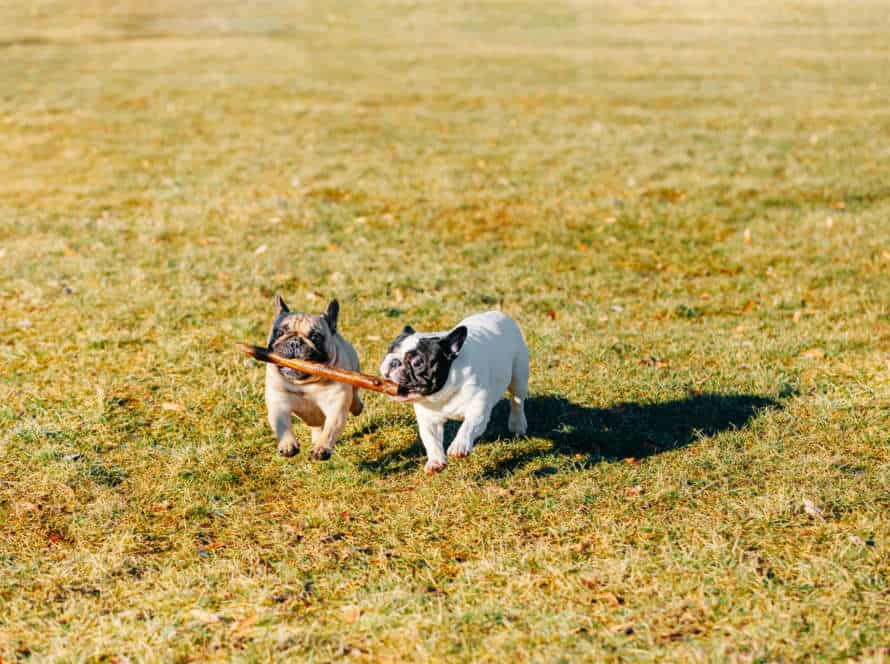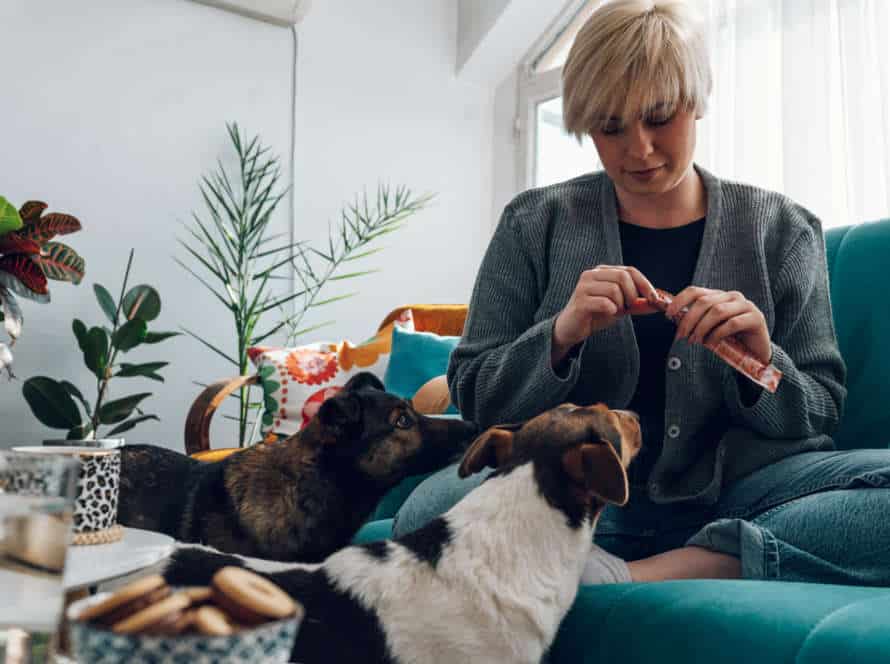Consistency and Coordination: Key Aspects of Training Multiple Dogs
Training multiple dogs requires consistency and coordination. Here’s how to get it done:
- Staff must stick to the same rules, commands, and techniques.
- Manage their training time well. Train them in different areas or at different times.
- Choose the same type of reward for all dogs. Give them the reward together when they obey the same command.
- Keep the same tone of voice, use the same commands and give equal attention to every pup.
- Use leashes and collars for each dog. Make sure they’re trained to listen when on/off-leash.
Consistency and coordination in training multiple dogs helps make it smoother, more efficient and more effective.
Pro tip: Patience is a must! Be consistent and positive. You’ll succeed.
Consistency in Training
Consistency is a must when training multiple dogs. The same commands, concepts and training methodology should be used for all. This helps to ensure the dogs learn correctly and don’t form bad habits. It’s also important to stay consistent with rewards and reprimands to set expectations for the dogs.
Establish a Routine
Creating a routine is important when training multiple pups. Consistency is the key here! Here’s how to do it:
- Make a schedule for each pooch – this includes meal times, playtime, training and rest time.
- Follow the same routine daily – this gives your doggies familiarity.
- Use the same training methods and commands for all.
- Be patient and give each dog time to learn and adapt.
- Reward good doggy behavior and prevent bad doggy behavior with the right measures.
By having a routine, you can make sure the training for multiple pups is successful and effective!
Use Consistent Commands and Rewards
Consistency is a must for dog training, especially when training multiple dogs. To be successful, same commands and rewards must be used. Here’s how to do it:
Commands: Make a list of standard commands and use them all the time. ‘Come’ or ‘Come here’ should not be used at the same time – this will cause confusion. Ensure that everyone who handles your pet uses the same commands.
Rewards: Pick a reward that your pup likes and use it every time they do something good. If one dog gets a treat and the other gets affection, confusion will arise. Make sure everyone understands the reward system you’ve set up. This will make your dog respond properly.
Consistency will help your pup understand what you want from them. This will create peaceful and successful interactions.
Provide Consistent Consequences for Misbehavior
Consistency is an absolute must when training multiple dogs. Providing the same consequences for misbehavior is a great way to set expectations and make sure all dogs understand. Here’s what to do:
- Set clear boundaries and commands that all family members know.
- If one dog messes up, use the same consequence each time – be it a verbal reprimand or a time-out.
- Give all dogs equal attention and training, without playing favorites.
- Don’t confuse your dogs by using different commands or punishments for the same behaviour.
Being consistent is essential to having a peaceful home with multiple dogs. It takes coordination, patience and communication. With some work, your pups can become well-trained and obedient family members.
Coordination Among Dogs
Training many dogs can be hard! Establishing coordination between them is essential for great performance. Here are some methods to help promote consistency and coordination amongst dogs:
- Consistency in training
- Regular training sessions
- Positive reinforcement
- Clear communication between the dogs and owner
Teach Individual Commands First
Training multiple dogs? It’s essential to teach one command to each pup, first. This allows you to focus on their individual needs and abilities. Once they’re all confident, start group commands. Make sure to use consistent reinforcement and praise! This encourages coordination among the dogs.
Multi-dog training is challenging – but with patience, individual attention, and consistency – it can be rewarding!
Practice Commands Together
Training multiple dogs can be challenging. However, it can be made simpler by practicing commands together and ensuring consistency & coordination in your training methods. Here are some tips to keep in mind:
- Train each dog individually first to make sure they understand the commands & expectations.
- Once each one knows the basics, start practicing commands together. Start off with simple commands they know well.
- Gradually increase the difficulty as each dog gets better at following commands together. Move on to more complex commands & tasks.
- Be consistent with your training methods – including your tone of voice, body language & rewards.
- Coordinate with all the handlers involved in training the dogs to guarantee that everyone has the same training methods & goals.
It is possible to successfully train multiple dogs & create good behavior habits among them, with consistent training & coordination.
Introduce New Commands Gradually
Training multiple dogs? Here’s the key: introduce new commands gradually! Steps to do it:
- Start with one dog – let them understand and master it before teaching others.
- Use same tone and gestures for each command. Consistency is key!
- Reinforce with rewards – treat or praise when they follow a command.
- Teach the rest of the pack – same techniques.
Training multiple dogs is challenging, but gradual introduction and consistency makes it smoother and successful!
Managing Distractions
Training multi-dog households? You need to be able to manage distractions! Anything from visitors to animals, people or objects can be a distraction. Have success? Set up a consistent and coordinated training environment. Control and keep the dogs focused on task. This article will talk about how to effectively manage distractions. That way, you’ll have consistent and coordinated training for multiple dogs.
Train in an Enclosed Area at First
Training multiple dogs can be tricky. To manage distractions, start in an enclosed area. Here are some tips:
- Choose a small, confined area like a backyard or living room.
- Keep the dogs on leashes and not too close to each other.
- Teach basic commands like “sit,” “stay,” and “come.” Give treats for obedience.
- Once they understand these in a confined area, slowly increase distance and train in open areas.
Consistency and coordination are key for successful training. As a bonus tip – reward good behaviour with treats!
Gradually Increase the Level of Distraction
Gradually increasing distraction is key for training multiple dogs. Start in a low distraction environment. Add sounds, smells, other dogs, then reward them with positive reinforcement when they follow your commands. Increase complexity by adding more distractions.
Consistency and coordination are also important. Give each dog the same attention, training, and rewards. Coordinate sessions to give individual attention while helping the pack succeed.
Pro tip: Safety and well-being come first when training multiple dogs.
Use Positive Reinforcement for Good Behavior Around Distractions
Train multiple dogs? Manage distractions! Positive reinforcement: the key.
Here are tips for using it effectively:
- Reward good behavior. Whenever your dogs do something positive around distractions, reward them. This reinforces the behavior, plus encourages more of it.
- Be consistent. Same timing, frequency and value of rewards.
- Timing is everything. Reward the good behavior immediately, so your dogs associate it with the reward.
- Coordinate. Make sure everyone in charge of your dogs is on the same page with the training methods and rewards. Keeps the training consistent and successful.
Positive reinforcement will help manage distractions and train your dogs to behave.
Using Positive Reinforcement
Positive reinforcement? Yes! It’s one of the most important aspects of training multiple dogs. Rewards can be given to promote desired behaviors. Also, consistency is key! This helps build a strong bond between the dogs and their trainer. Let’s learn more about it.
Use Treats for Rewards
Treats are a great way to train multiple dogs with positive reinforcement. Consistency and coordination are the secrets to success! Here are some tips:
- Offer high-value treats to reward good behaviour.
- Give rewards to all dogs at the same time to avoid competition and jealousy.
- Use a marker word, such as “yes” or “good” to show when dogs have done something right and get a treat.
- Be consistent and give treats for good behaviour every time.
- Coordinate with anyone else who helps you with the training, for consistent results.
Pro Tip: When training more than one dog, focus on positive reinforcement and train each dog separately first. This way, you’ll get better coordination and higher success rates!
Use Verbal Praise and Affection
Positive reinforcement, like verbal praise and affection, is a great way to train multiple dogs. Here are some tips:
- Be clear and use a positive voice when giving commands or praising.
- Reward good behaviour with lots of verbal praise and physical affection, like belly rubs and ear scratches.
- Avoid scolding and physical punishment, as it can cause fear and anxiety.
- Work as a team, set consistent rules and expectations for each dog.
- Communicate with other trainers or family members. Coordinate plans and always respond consistently to your pup’s needs and progress.
Avoid Using Punishment as a Form of Training
Punishment may seem like an easy way to manage unwanted behavior in pets, but it can actually have a negative impact on your dog’s mental health and even cause aggression. Positive reinforcement is a better option. It involves rewarding your canine for good conduct rather than punishing the bad. This can be done with treats, compliments, and cuddles!
Consistency and coordination are key for training multiple dogs. Set rules everyone agrees on and make sure to consistently enforce them. Use the same commands, tone, and rewards so that your pooches understand what is expected of them.
Pro Tip: Keep in mind that positive reinforcement training requires patience and dedication. Be consistent, communicate effectively, and show your love with a treat or hug when they do something right – this will help build a strong bond between you and your furry friends.
Training Multiple Dogs of Different Breeds and Personalities
Training may be hard with multiple dogs. Different breeds and personalities make this even trickier. To have success you must understand each pup’s needs. Consistency and coordination are key. Learn how to use them to create an effective plan. That’s how you can train multiple dogs!
Tailor Training to Individual Needs
Training multiple dogs of varied breeds and personalities? It’s a must to tailor the training for each pup’s individual needs. Consistency and coordination are essential! Here are some tips:
- Assess each dog’s character, breed traits, and how they learn.
- Compose individual training plans based on the assessment.
- Give some time to individual and group training.
- Be consistent with methods, commands and rewards.
- Use coordination to set boundaries and avoid confusion.
- Show equal attention to all dogs, particularly the dominant ones, to avoid any resentments.
Patience and consistency are the golden rules. Keep expectations realistic and don’t rush it. With commitment and the right approach, you can help each pup reach their full potential.
Monitor Interactions and Personality Conflicts
Training multiple dogs of various breeds and temperaments is a strenuous mission. Here are some useful suggestions to make it a breeze:
- Give each pup individual attention. Spend some time teaching them basic commands and obedience training exclusively.
- Be regular and synchronised. Use the same commands and prizes constantly and coordinate with all family members involved in the process to avoid misunderstandings.
- Monitor their activities. Keep an eye on the interactions between dogs to prevent any aggressive behaviour or personality conflicts.
- Reinforce the good stuff. Reward the good behaviour with treats, words of appreciation or petting to boost desired behaviour.
- Get help from experts. Consider recruiting professional assistance from a certified dog trainer or behaviourist to tackle complex training issues.
Remember these tips for successful and effective training with multiple doggos of different breeds and characters!
Seek Professional Help if Needed
Training multitudes of different breeds and personalities of dogs can be a fulfilling experience for owners, although it can be difficult. Consistency and coordination are vital to successful education, though occasionally expert help is required.
These are clues that you may need help from a professional trainer:
- Your pup has behaviour issues that you can’t control, e.g. aggression, anxiety when alone, or too much barking.
- Your dogs have different training requirements that are hard to address together.
- You’re having difficulty controlling and managing your pooches during lessons, leading to a chaotic approach to training.
- You don’t have much knowledge or experience in training, and need support to create effective plans.
Getting the help of an experienced canine instructor can aid you in overcoming these issues and ensure success in training. A pro can evaluate the needs of your dogs, craft customised instructions, and guide you through the process of teaching many dogs successfully and effectively.
Frequently Asked Questions
Q: How do I ensure consistency when training multiple dogs?
A: It’s important to establish clear rules and boundaries for all dogs and to enforce them consistently. Use the same commands and techniques with each dog and make sure everyone in the household is on the same page.
Q: What are some tips for coordinating training sessions with multiple dogs?
A: Work with each dog individually at first to establish a foundation before introducing them to group training sessions. Use visual cues and hand signals to communicate with each dog and make sure they each have their own designated space to avoid distraction and confusion.
Q: Can I train multiple dogs of different breeds and ages together?
A: Yes, as long as you take into consideration their individual needs and abilities. Train at a pace that accommodates the slower learners and make sure each dog is comfortable with the exercises before moving on to more challenging tasks.
Q: Should I use the same rewards for all dogs in a multiple-dog household?
A: It’s best to tailor rewards to each dog’s individual preferences and what motivates them. While some may respond well to treats, others may respond better to praise, playtime, or a favorite toy.
Q: Can I train different breeds of dogs in the same way?
A: While the general principles of dog training apply to all breeds, it’s important to consider each breed’s specific characteristics and tendencies. Some breeds may require a gentler approach, while others may be more stubborn and require more patience and persistence.
Q: What should I do if one dog is advancing faster than the others?
A: Don’t hold back the faster learner, but also don’t advance too quickly for the slower learners. Make sure to give each dog individual attention and keep working at a pace that allows everyone to succeed.

